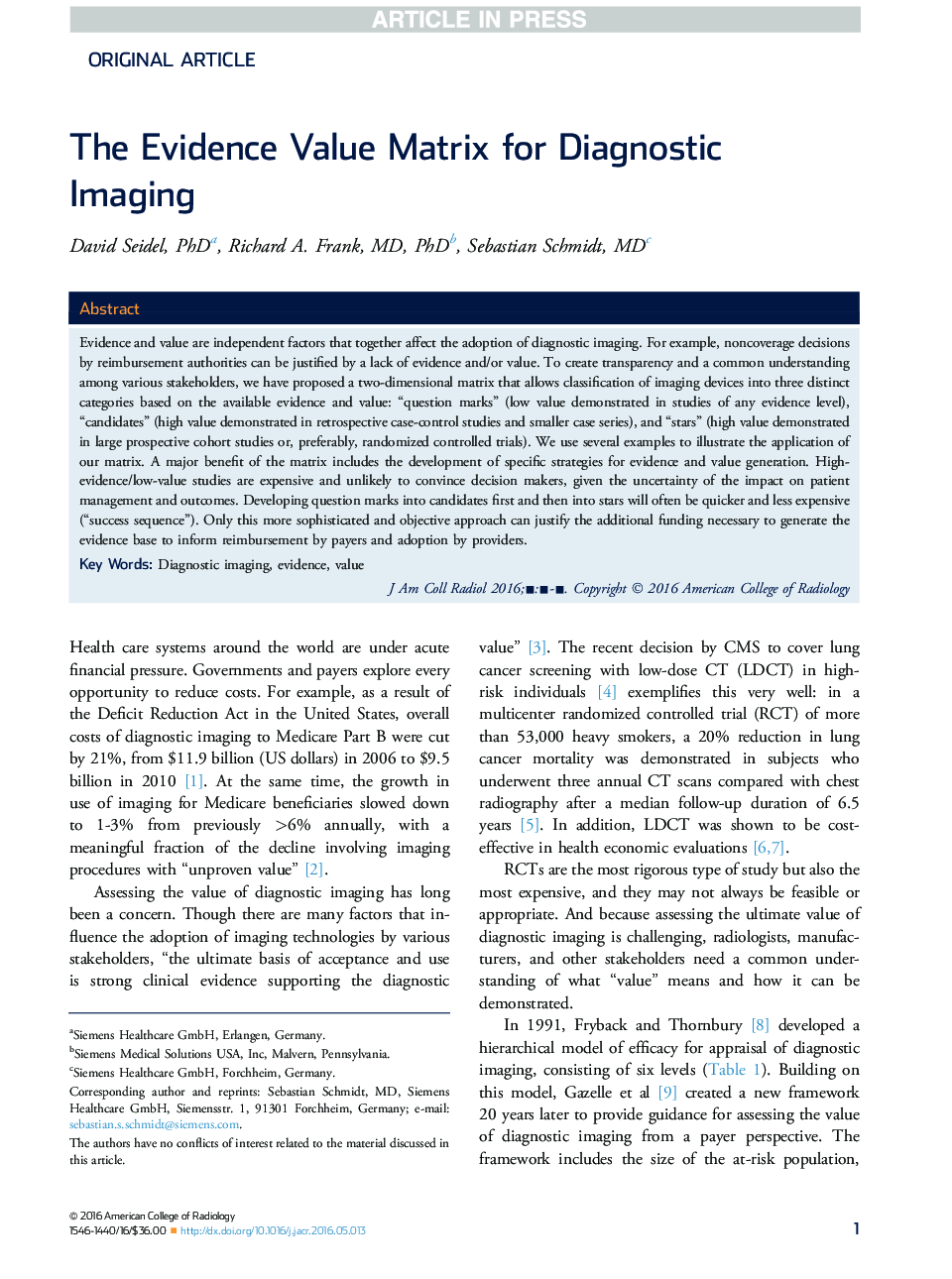| Article ID | Journal | Published Year | Pages | File Type |
|---|---|---|---|---|
| 4229743 | Journal of the American College of Radiology | 2016 | 7 Pages |
Abstract
Evidence and value are independent factors that together affect the adoption of diagnostic imaging. For example, noncoverage decisions by reimbursement authorities can be justified by a lack of evidence and/or value. To create transparency and a common understanding among various stakeholders, we have proposed a two-dimensional matrix that allows classification of imaging devices into three distinct categories based on the available evidence and value: “question marks” (low value demonstrated in studies of any evidence level), “candidates” (high value demonstrated in retrospective case-control studies and smaller case series), and “stars” (high value demonstrated in large prospective cohort studies or, preferably, randomized controlled trials). We use several examples to illustrate the application of our matrix. A major benefit of the matrix includes the development of specific strategies for evidence and value generation. High-evidence/low-value studies are expensive and unlikely to convince decision makers, given the uncertainty of the impact on patient management and outcomes. Developing question marks into candidates first and then into stars will often be quicker and less expensive (“success sequence”). Only this more sophisticated and objective approach can justify the additional funding necessary to generate the evidence base to inform reimbursement by payers and adoption by providers.
Keywords
Related Topics
Health Sciences
Medicine and Dentistry
Radiology and Imaging
Authors
David PhD, Richard A. MD, PhD, Sebastian MD,
